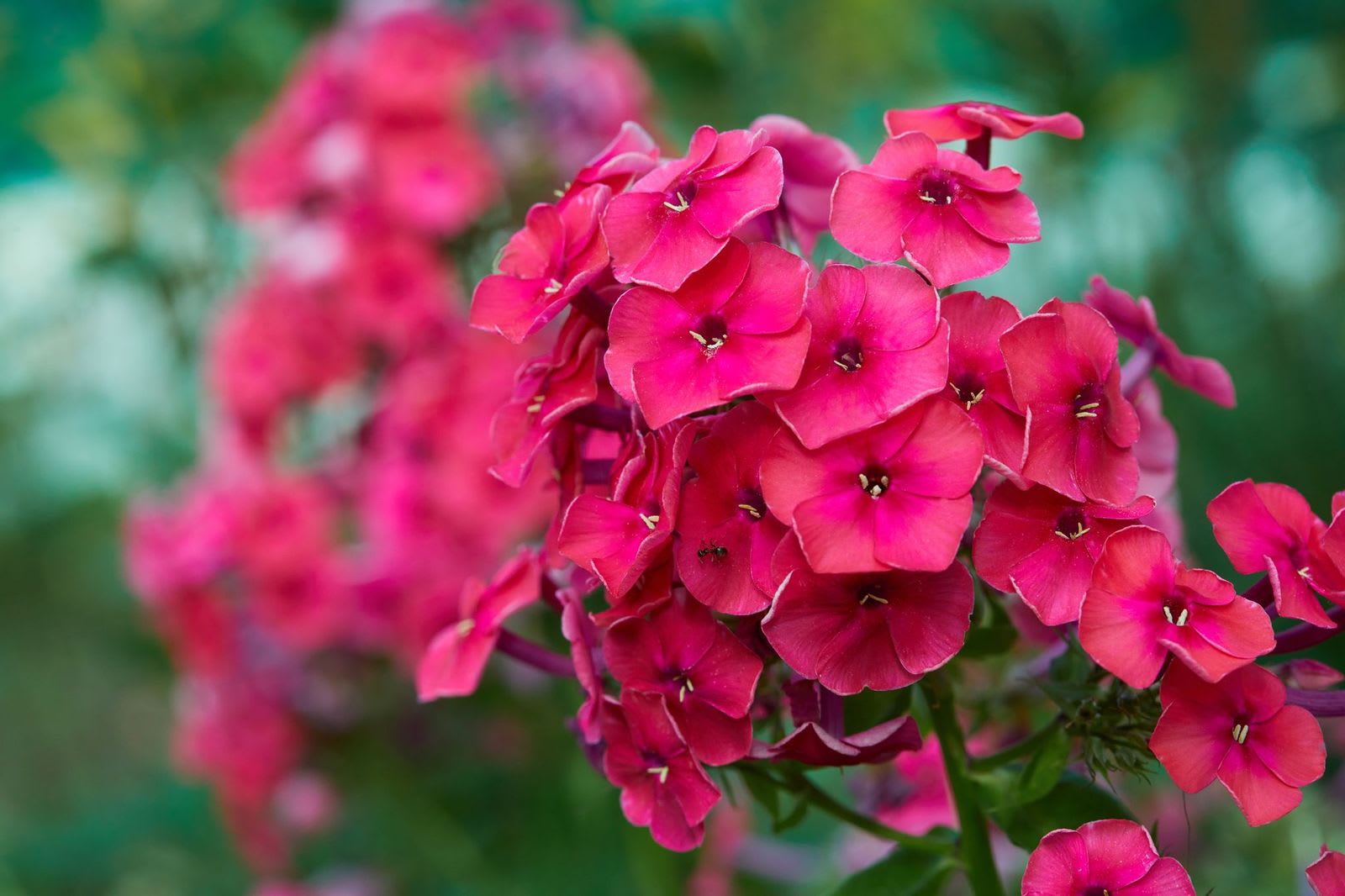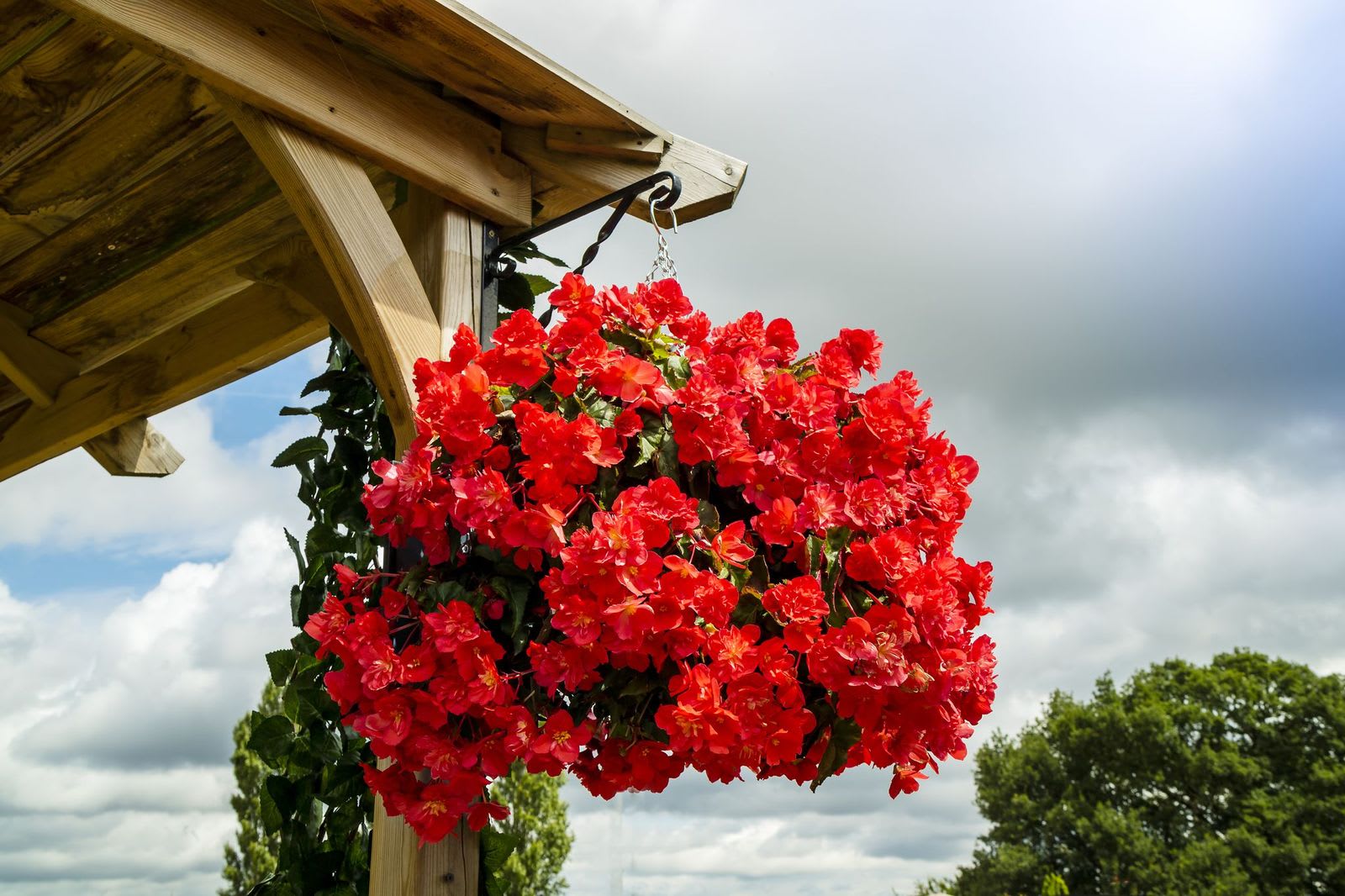Many of us take time looking at paint charts and buying test pots of paint to try out on our walls before we decorate our homes. We know the colours we use on the walls and soft furnishings play an important part in making our indoor environment feel peaceful and a like place we want to spend time in. But what about your garden and choosing the right colour plants to ensure our outside space is all that we would like it to be?
Not only can flower colours make you feel peaceful, joyful and excited, but selecting plants in shades of a similar colour can be equally ‘mood’ changing. Indeed, a garden planted entirely in shades of green with varying leaf shapes and plant structures can create a cool, soothing place in which to relax.
When selecting which plants, trees and shrubs to use in your outdoor space you must consider your overall garden style: planting a romantic cottage garden with borders of bright colours would not necessarily create the seasonal effect you are looking for.
One of the most famous gardens in the UK, which was planted in the early 1950’s by Vita Sackville-West, is the internationally renowned ‘White Garden’, planted using a combination of white, green, grey and silver. By restricting the colour palette and focusing on creating interest and drama using different shapes, textures and forms, it is possible to create a tranquil yet interesting garden. As light levels fall towards late afternoon and early evening in the summer months it will take on an enchanting atmosphere and white is culturally associated with peace, spirituality and purity.
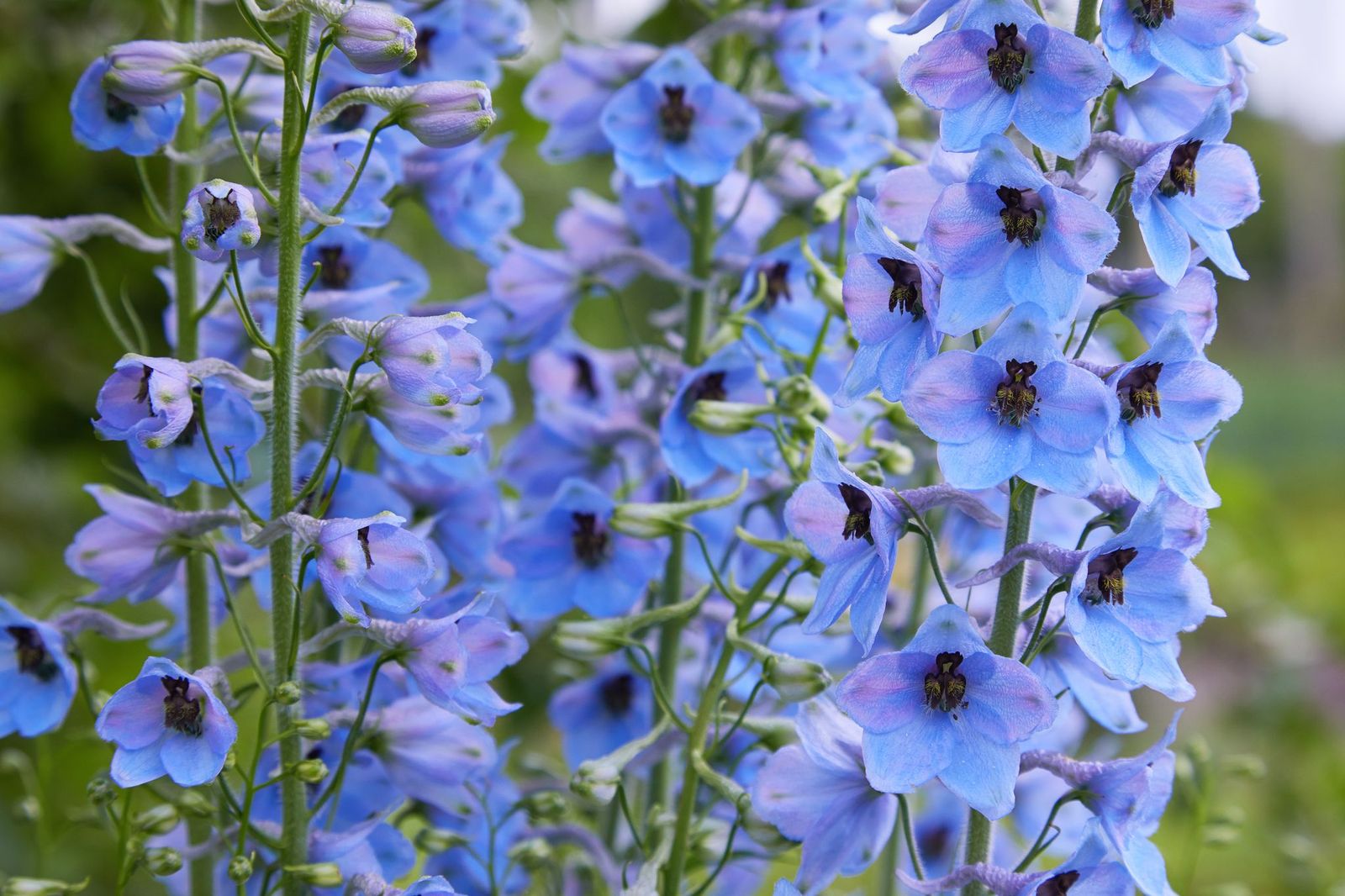 To create an illusion of space, look towards using a selection of cooling blue-flowering perennials and shrubs. There are many plants which have blue flowers, from the tall spires of Delphiniums and Aconites to Veronicas , Eryngium, and Echinops to flowering shrubs such as Ceanothus and if you have acidic soil , Hydrangeas will have blue flowers.
To create an illusion of space, look towards using a selection of cooling blue-flowering perennials and shrubs. There are many plants which have blue flowers, from the tall spires of Delphiniums and Aconites to Veronicas , Eryngium, and Echinops to flowering shrubs such as Ceanothus and if you have acidic soil , Hydrangeas will have blue flowers.
Shades of deep purple – associated with quiet contemplation, thoughtfulness, and solitude – work well in a garden when interplanted with violet and soft mauves. Plants with deep bronze-to-purple foliage include Physocarpus and Heuchera. Flowering shrubs such as Wisteria and Syringa (lilac) as well as several Clematis come in shades of purple, as do perennials such as Verbena Bonariensis, Lavendula Hidcote and Nepeta, to name just a few.
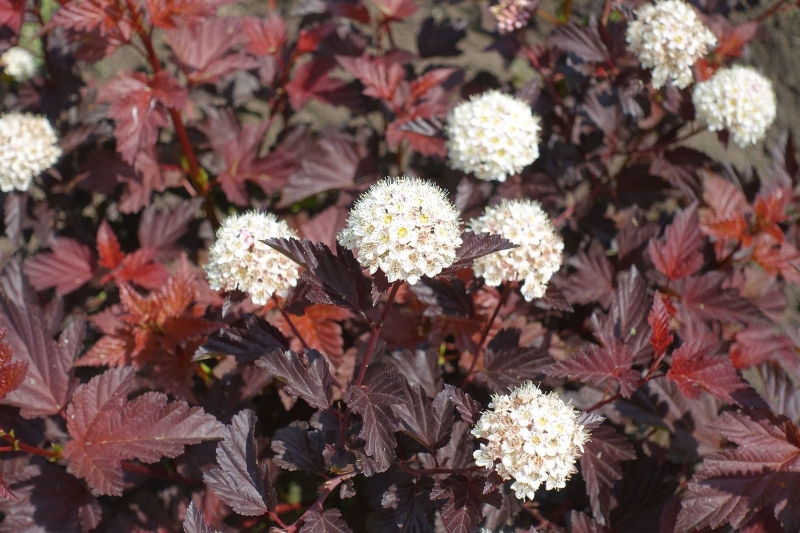 Pink blooms can be selected from the palest tones (verging on almost white) to deep shocking pinks which add vibrancy and contrast to a planting scheme. I once designed a garden where the hard landscaping was shades of green and white, all the planting was variegated leaves, but the accent was bright pink Roses and Phlox.
Pink blooms can be selected from the palest tones (verging on almost white) to deep shocking pinks which add vibrancy and contrast to a planting scheme. I once designed a garden where the hard landscaping was shades of green and white, all the planting was variegated leaves, but the accent was bright pink Roses and Phlox.
If you favour using hot reds, oranges and deep yellows, care should be taken in the planning as these colours are quite dominant and can make a small space look smaller. They do however bring vibrancy and energy to a garden. Often perennials which flower into the autumn can offer exciting shades and combine well with the changing tree leaf colour associated with this time of the year. Through the seasons from spring to autumn, you will find a wide range of perennials offering red flowers including red Roses, Achillea (yarrow), Hemerocallis, red Dianthus, Monarda (Bergamot), Crocosmia, Rudbeckia and Dahlias such as ‘Bishop of Llanduff.’ Deep orange to yellow blooms includes spring flowering Ranunculus, Euphorbia griffithii, Iris, Canna Lilies, Chrysanthemums and Heleniums.
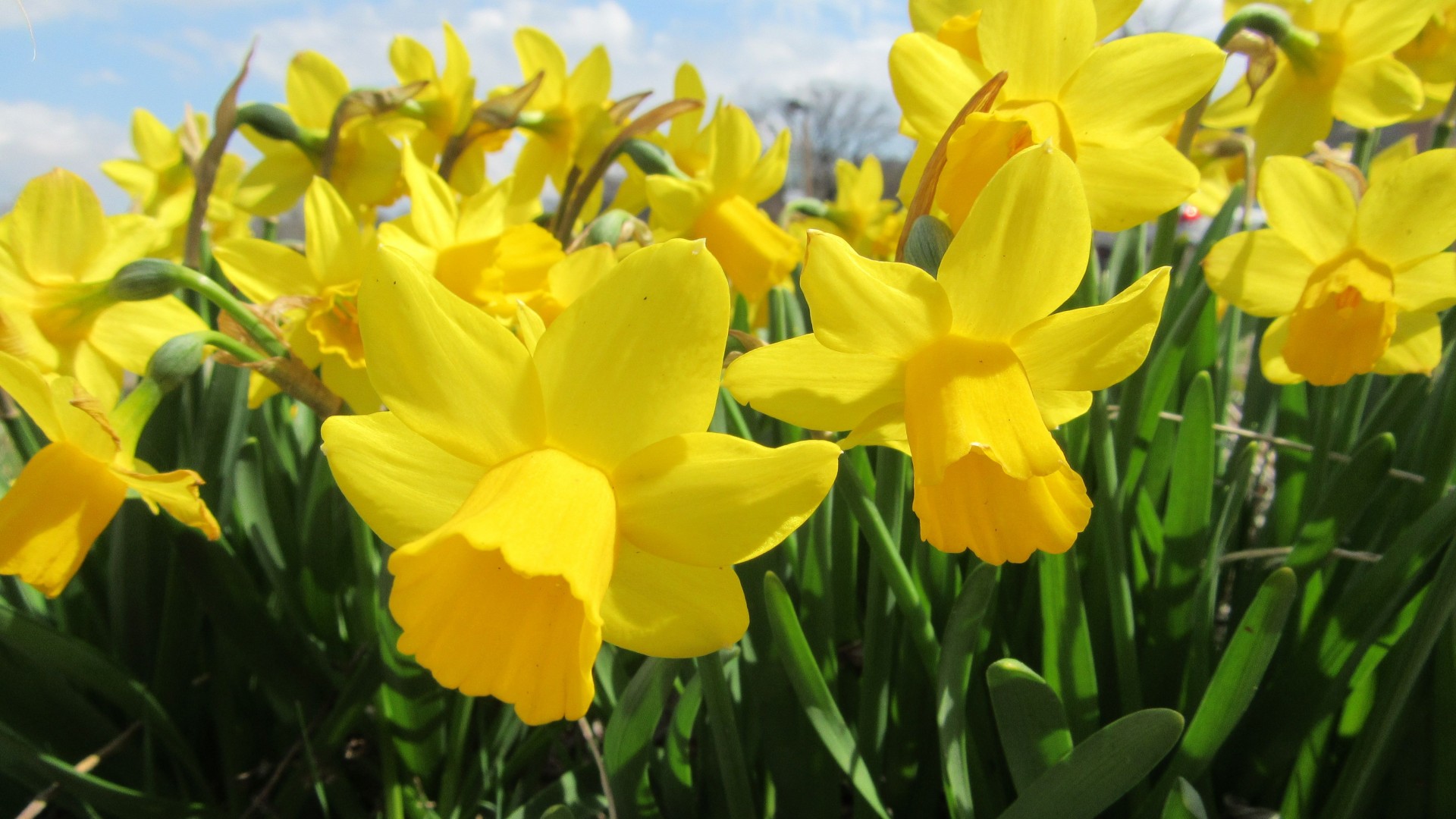 Yellow, on the other hand, is often more associated with spring. After the dark days of winter, nothing fills one with joy more than the sight of golden crocuses and swathes of daffodils bobbing in the breeze. The shades of yellow in a spring garden are the colours of optimism that lift our spirits.
Yellow, on the other hand, is often more associated with spring. After the dark days of winter, nothing fills one with joy more than the sight of golden crocuses and swathes of daffodils bobbing in the breeze. The shades of yellow in a spring garden are the colours of optimism that lift our spirits.
